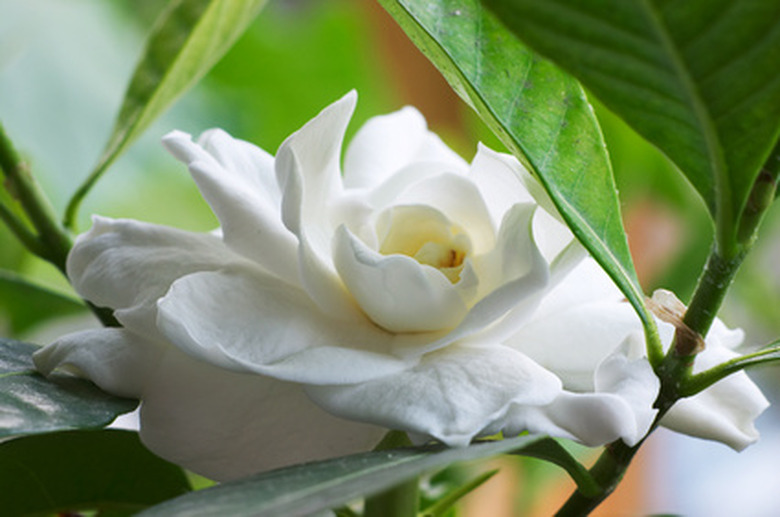Gardenia Root Rot Cures
Gardenias are evergreen shrubs or trees with shiny leaves and large, white or yellow flowers. There are over 200 species of gardenia. The plant grows well in the full sun but will tolerate light shade. Gardenias prefer slightly acidic, moist soil with plenty of organic matter and acid fertilizer that contains iron and other micronutrients. The plant is prone to both pest infestation and root rot diseases, including Texas root rot, mushroom root rot and root knot nematode.
Texas Root Rot and Treatment
Texas root rot, also known as cotton root rot, is a fungus that thrives in chalky clay soils in hot climates, specifically in the Southwestern United States. When temperatures are warm, the disease is fast spreading with plant death occurring within days of leaf wilt, according to The University of Arizona Cooperative Extension. During cooler months, plant decline is slower. There is no cure for Texas root rot, just prevention. Treat the soil around the gardenia bushes with organic matter to lower the pH.
- Gardenias are evergreen shrubs or trees with shiny leaves and large, white or yellow flowers.
- When temperatures are warm, the disease is fast spreading with plant death occurring within days of leaf wilt, according to The University of Arizona Cooperative Extension.
Mushroom Root Rot and Treatment
Mushroom root rot is also caused by a fungus and is identified by the appearance of mushrooms at the base of the gardenia, according to Forest Pests. The leaves of infected gardenia plants turn yellow, die back and drop. The roots will be decayed or circling the base of the tree below the surface of the soil. Black rhizomorphs that look like black threads will appear in the soil around the gardenia and underneath the bark. There is no cure. Remove diseased gardenias, including the roots, and any affected soil before re-planting.
Root Knot Nematode and Treatment
Root knot nematode is a nearly invisible, worm-like parasite. Females lay their eggs on the outside of the gardenia's roots while the juveniles enter through the root tips and begin feeding, according to the University of Maryland Extension. Symptoms include yellow and wilting leaves, stunted growth and misshapen roots. Treatment includes applying fumigants and nematicides to eliminate the parasite and practicing prevention measures, such as planting disease-free gardenias.
- Mushroom root rot is also caused by a fungus and is identified by the appearance of mushrooms at the base of the gardenia, according to Forest Pests.
- Black rhizomorphs that look like black threads will appear in the soil around the gardenia and underneath the bark.
